A large museum dedicated to the creativity of human beings, and an institution that, as stated by its first director, Henry Cole, aims to be a “classroom for all”-these are the premises under which London’s Victoria and Albert Museum, a museum with a centuries-old history, was born. It began its operation in 1852 as the Museum of Manufactures, which was based in Marlborough House, although it was then moved a few months later to Somerset House. In 1854 the museum was moved to a new location (the present one) and renamed South Kensington Museum: however, the official opening came on June 20, 1857, in the presence of Queen Victoria. The current name, from the names of Queen Victoria and Prince Consort Albert, came instead on May 17, 1899, when the queen laid the foundation stone of the building’s main facade, designed by Aston Webb and officially opened on June 26, 1909, by King Edward VII and Queen Alexandra.
The Victoria and Albert Museum, also more simply called the V&A, has a collection of 2.3 million objects that investigates as many as five thousand years of creativity, and its collection focuses mainly on the decorative arts: there are architectural studies, furniture, jewelry, textiles, fashion, ceramics, and design objects, but there is no shortage of important paintings, sculptures, and photographs. It is a journey from ancient Chinese porcelain to modern Alexander McQueen clothes, passing through five millennia of history. At the V&A, everything man has created throughout history is documented. Among the most important collection nuclei is certainly the one dedicated to jewelry, with 3,000 pieces that tell the story of jewelry from antiquity to the present day: there are also the jewels that Queen Elizabeth I bestowed on members of her court, the diamonds of Catherine of Russia, diamond tiaras by Cartier, and jewelry created by today’s finest goldsmiths. No less important is the fashion collection, housed in Room 40: there are rare seventeenth-century dresses, accessories for men and women, and contemporary clothes from the 1960s onward with signatures of designers such as Cristóbal Balenciaga, Stella Jean, and Alexander McQueen. The public will also be impressed by the shoe collection: there are two thousand pairs of footwear from ancient Egypt to the present day, including also some amazing shoes designed not only by great designers (such as Vivienne Westwood, Dolce&Gabbana or Christian Loboutin, whose iconic Fifi is featured), but also by artists (e.g. Zaha Hadid). And, still in the field of fashion, here and there around the museum it is possible to encounter wedding dresses from the collection, which cover five centuries of history documenting the ways in which taste has changed from the 16th century to the present day.
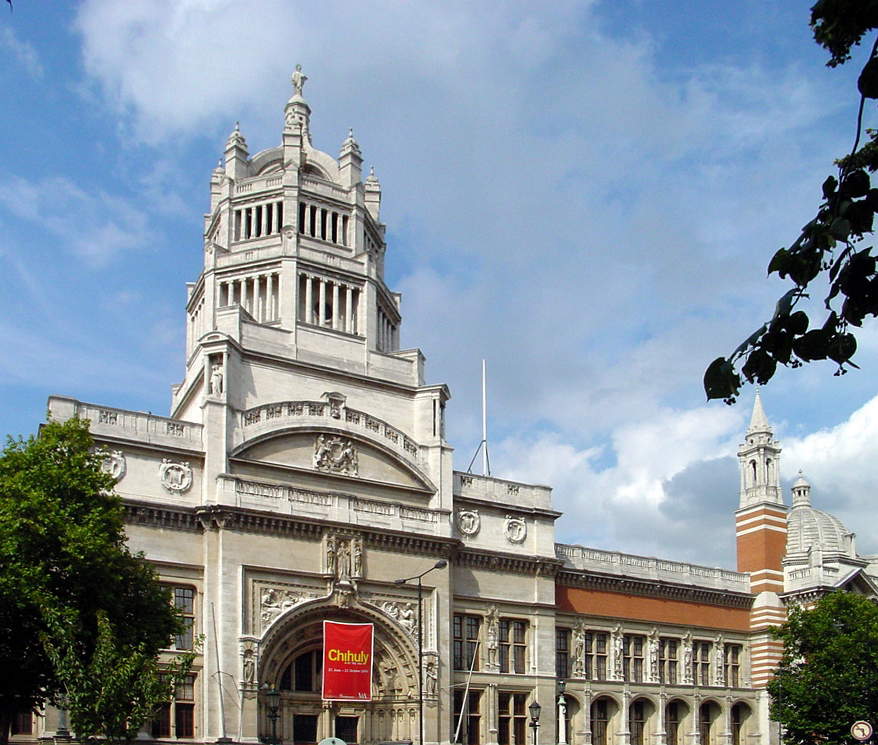 |
| Aston Webb’s Facade |
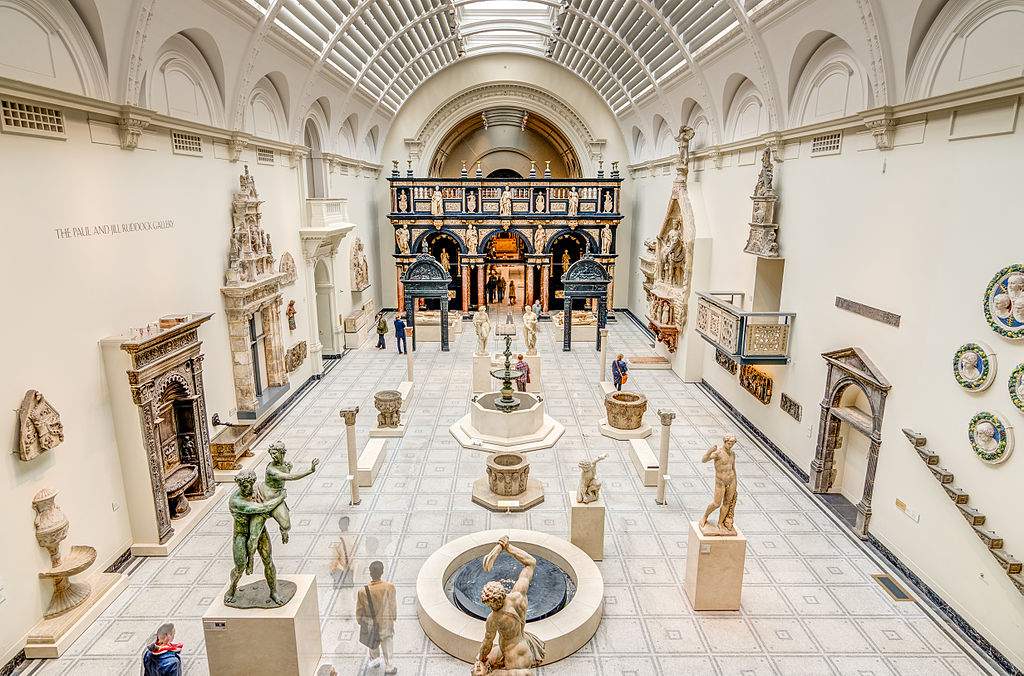 |
| Gallery of Medieval and Renaissance art. Photo Brenac |
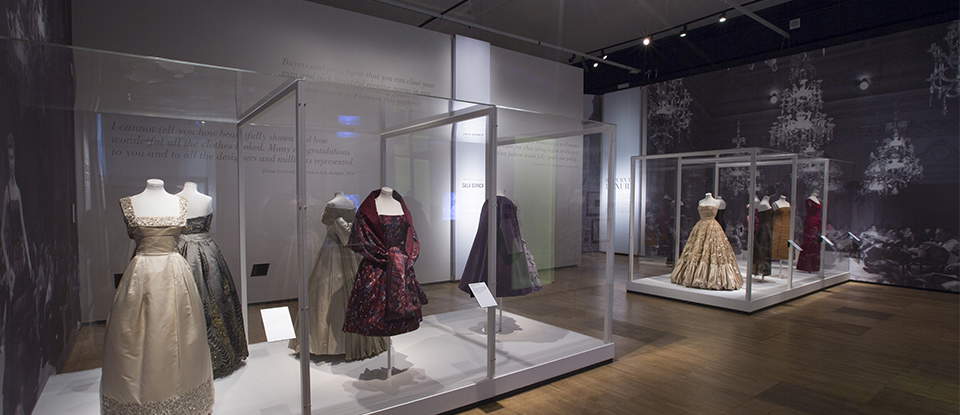 |
| Hall of the Victoria & Albert Museum in London |
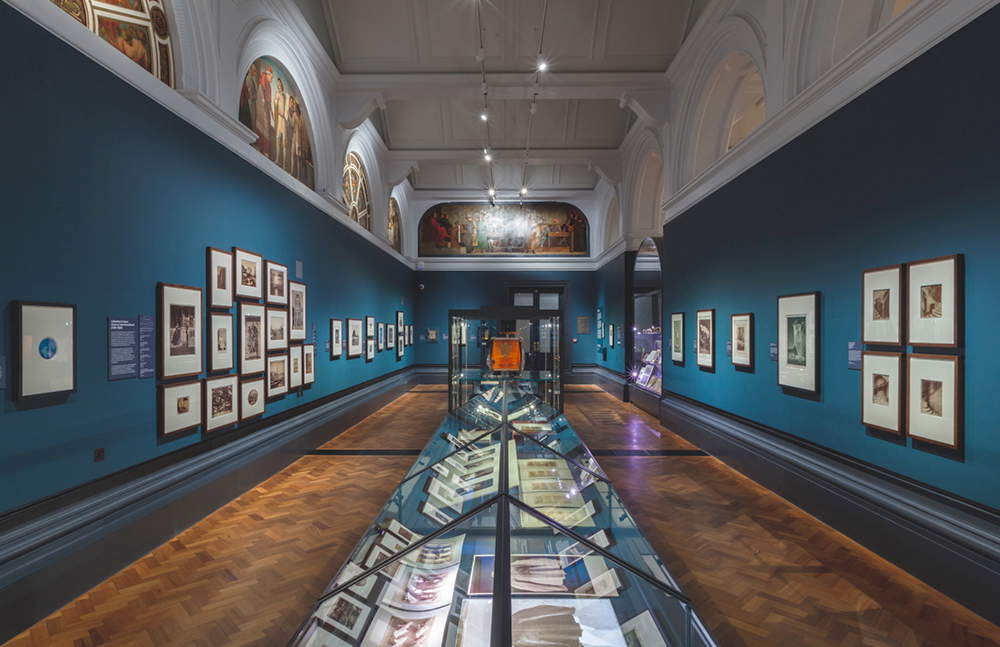 |
| Hall of the Victoria & Albert Museum, London |
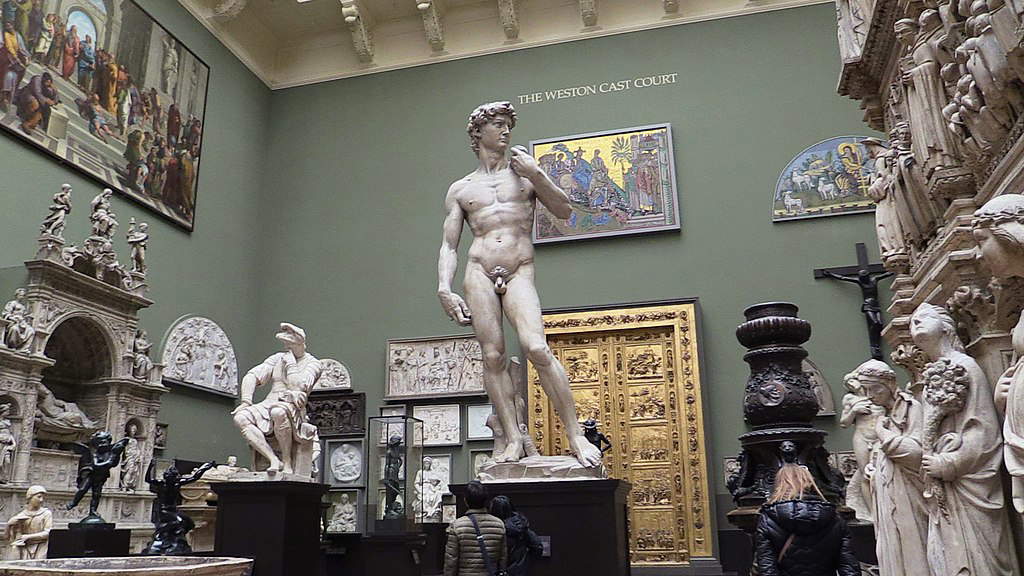 |
| The court of plaster casts. Photo by Colin McLaughlin |
The institute is also home to Britain’s most important collection of architecture: there are large plaster models, studies, drawings and sketches by great British and international architects from the 15th century onward, fragments of buildings that the museum has continued to collect from its founding to the present day (however, it was only in 2014 that the V&A opened a specific architecture department). Among the architects represented are Giovanni Battista Piranesi, Francis Fowke, César Pelli, and several others. One of the museum’s flagships is also its furniture collection, housed between rooms 133 and 135. It is a collection that, according to the museum, is unrivaled in breadth and quality and spans six centuries of British and international furniture production, with specimens from around the world. Still, of great importance is the photography collection, which the museum has started from the very beginning (the first director Henry Cole was even an amateur photographer). The collection started in 1856 and now includes 800,000 photographs from 1839, the year photography was invented, to the present.
There is also no shortage of an important collection of paintings, heir to the Museum of Ornamental Art that had opened in South Kensington in 1857. There are seminal works of English art history, such as paintings by John Constable and William Turner, the Portrait of a Young Man among Roses by Nicholas Hilliard (the greatest artist of the age of Elizabeth I), works by William Blake, masterpieces by international artists (from Sandro Botticelli to Carlo Crivelli, Antonio Canova to Perugino), and above all the cartoons for the Vatican tapestries made by Raphael Sanzio: They were commissioned by Pope Leo X in 1515, and later came to the collection of English royalty (they were brought to England by King Charles I, who has loaned them to the Victoria and Albert Museum since 1865). The sculpture collection is also notable, including works by Donatello and Michelangelo Buonarroti.
The V&A was also the first museum in the world to open a department dedicated to research, which is still in operation today, on a variety of fields: from design to conservation, from management to education. The conservation department, in particular, is one of the most active, and can count on experts working on textiles, ceramics, glass, metal, sculpture, paper, paintings, and books through modern techniques. Also important is the work the museum has done on digitization: more than one million of the objects in the collection, or almost half of the total, can be reached online from the website (which also allows vertical insights into objects not normally on display: there are, for example, focuses on hats, eyeglasses, underwear, the Glastonbury Festival archive documenting its fifty-year history and which since 2014 has been preserved right at the V&A, and so on).
The museum’s collection is spread over 145 rooms, which house not only the objects in the collection but also numerous temporary exhibitions (the museum generally holds about ten each year). There are also several activities that the museum continuously offers to its public. And which make it one of the most beloved museums for the British public and beyond, as well as one of the most visited museums in the world.
 |
| All the creativity of human beings in one museum: the Victoria & Albert Museum in London |
Warning: the translation into English of the original Italian article was created using automatic tools. We undertake to review all articles, but we do not guarantee the total absence of inaccuracies in the translation due to the program. You can find the original by clicking on the ITA button. If you find any mistake,please contact us.